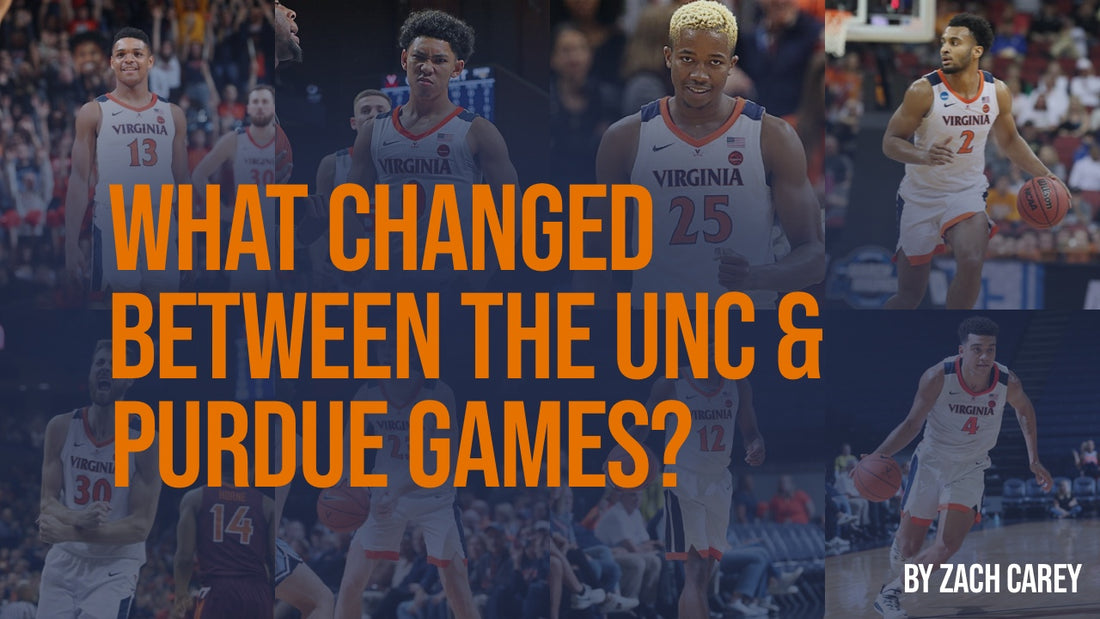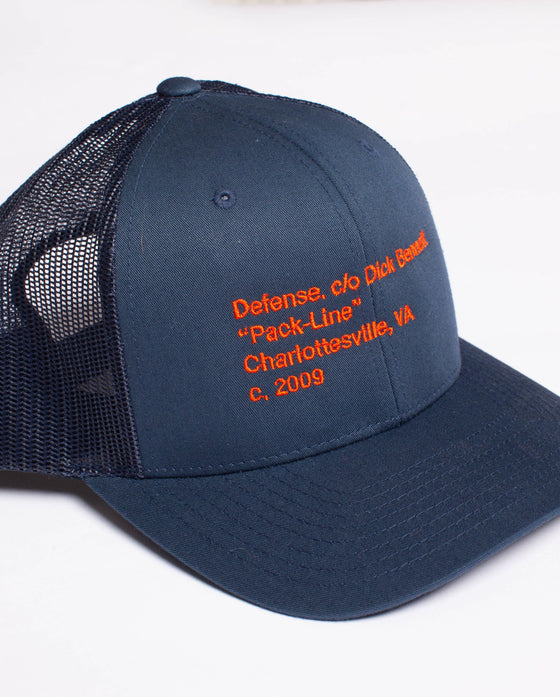What Changed Between the UNC and Purdue Games

The Virginia offense hasn’t been good this year. It just hasn’t. They lack a go to scorer and, as we all now, the shooting has been atrocious. But, part of the problem has been that the personnel don’t match up well with the schemes.
Previously, I’ve gone into detail that both Jay Huff and Mamadi Diakite fit the mold of big men in the continuity ball screen offense that UVA runs. They can both nail the outside shot, and are decent enough off a pick and roll where they can attack backside space.
What Virginia's Offense Can Be
That’s great, and ideally that offensive set is where the ‘Hoos could make the biggest impact, but the lack of experience and fluidity in the backcourt makes it difficult for this scheme to be run effectively. The continuity ball screen offense is designed to put guards in the position to attack down hill and then make decisions, and, frankly, Virginia really only boasts one, maybe two players that can do that in Kihei Clark and Casey Morsell.
I will note, that before getting injured, Braxton Key was showing improvements in those areas in this offense, but until we see him up against high-quality opponents (since he missed the Carolina and Purdue games), I’ll withhold my judgement. I’m sure he’ll add a spark, but it’s highly unlikely that he makes enough of an impact to put the offensive troubles to bed.
Nonetheless, what’s become evident in the last two games against the two top-30 defenses (via KenPom) Virginia has faced, is that without that consistent driving or outside shooting threat, the opposing defense can key in on helping down low. As we saw against North Carolina and Purdue, from now on, Huff and Diakite are going to be constantly hounded on the baseline and in the post on the catch. That’s a direct result of the defense flat out disrespecting the ability of Virginia’s ballhandlers to make a difference in the continuity ball screen set.
Explaining the continuity ball screen offense
While Morsell has been decent at hitting a pull up jumper off the screen, and even had a few nice drives off the continuity ball screen set in the ASU game, he seemed tentative to touch the paint against Purdue and UNC. Stattmann and Woldetensae don't yet have the strength or ball security to use the pick effectively. Kihei's an adept passer out of it, but his lack of height makes it difficult for him to finish among the trees. Key’s return should help this offensive scheme, as he's a big enough body with enough ball handling to get inside and finish. To be frank though, Clark, Key, and Morsell all have certain skills necessary for attacking those wing screens, but not quite the whole package.
Without playmakers like Kyle Guy, Ty Jerome, and Deandre Hunter to rely on, the big guys are left to their own devices, and when the defenses can key in on them, there’s not a lot that can go right. With that in mind, let’s look at the numbers.
Explaining Ken Pom Ratings and Rankings
In Virginia’s matchup with Purdue, they used the continuity ball screen offense on 60.6% of their settled offensive possessions, the mover blocker offense on 18% of their possessions, a four out, ball screen at the top of the key set on 11.5% of their possessions, and the triangle offense on 9.8% of their total 61 set possessions.
On possessions in the continuity ball screen offense, the ‘Hoos scored a mere .729 points per possession. Purdue’s length bothered them, and that lack of ball handlers made everything that much more difficult.
In the mover blocker set, they scored a much more respectable 1.09 points per possession. The ball was in and out of the guards’ hands more and they were able to keep the offense running smoothly, rather than the start-stop rhythm that can plague the continuity ball screen offense.
As we all remember, that 40-point output against Purdue was like pulling teeth for the ‘Hoos, and while the North Carolina game was sluggish for a while, the ‘Hoos did break through and score 56 points on an overall .847 point per possession performance (in comparison to a measly .639 PPP against Purdue). So, what changed? Part of it was that, while North Carolina has a very good defense (27th in the country via KenPom with a 90.1 rating), Purdue’s is elite, at 6th in the nation boasting an 85.9 rating. While that certainly made a difference, the change in the offensive scheme between those two games is where the story lies.

Against Carolina, Bennett favored his staple offense: the mover blocker set. In 59 possessions, Virginia ran the mover blocker offense on 64% of their set possessions, the continuity ball screen set on 13.5%, and the 4-out, top of the key ball screen offense on 18.6% of possessions.
Regarding the effectiveness of those sets, the mover blocker yielded 1 point per possession, the 4-out ball screen offense scored 1.09 points per possession, while the continuity ball screen offense failed to register a single point all game. While yes, Virginia did shoot much better against North Carolina, that is more a result of the offense’s efficiency than vice versa, as the shots the ‘Hoos were taking were better, more in rhythm looks than in the Purdue game.
What this tells us is that, since the mover blocker offense relies less on each individual ball handler to make a play and more on each man working to get the slightest advantage on their defender to find the best shot for the team, the mover blocker is likely the way to go for this team. While the big men would theoretically be more effective in the continuity ball screen offense, they need ball handlers to supplement their play.
Again, this is more a matter of personnel than the scheme itself not working. We saw last year that with the right players, it can be darn effective.
With that in mind, look for the mover blocker set to be the primary offense moving forward. These next few games should allow the ‘Hoos to tune some things up. A few less-challenging opponents on deck would suggest that, hopefully, by the time ACC play comes around, they’ll be as much of a well-oiled machine as possible.
Don't Miss Our Latest Podcast:



